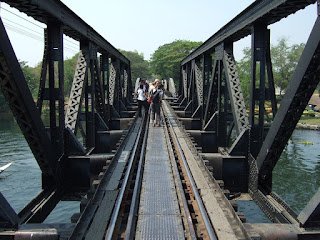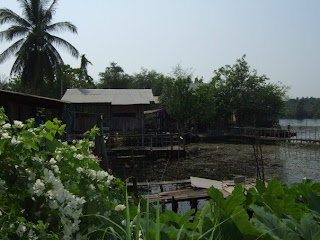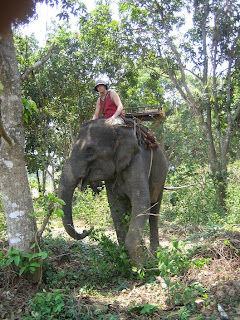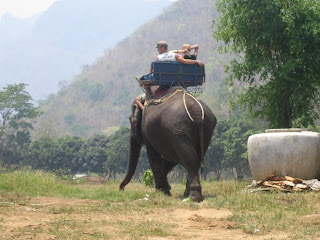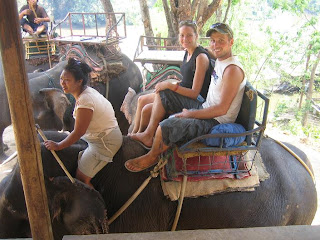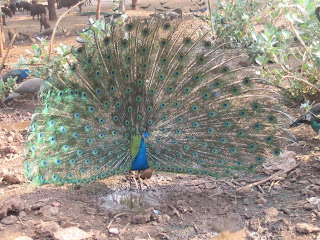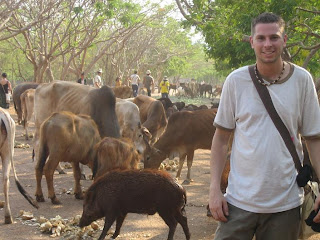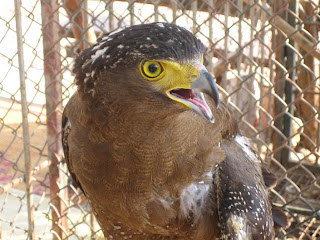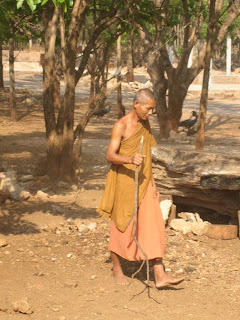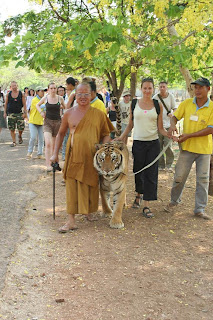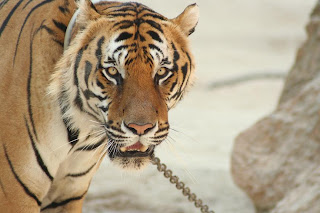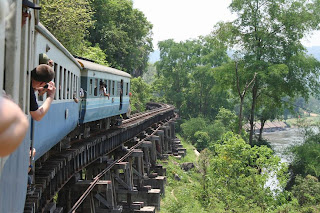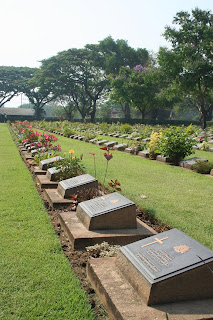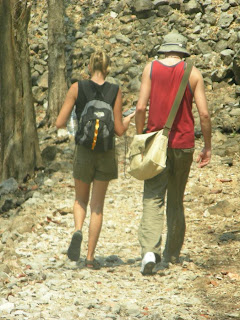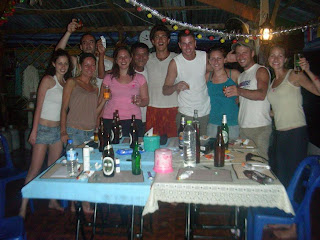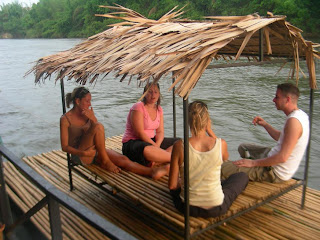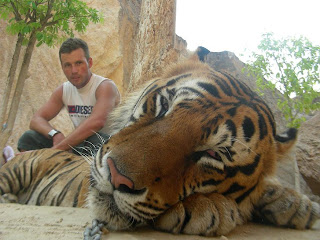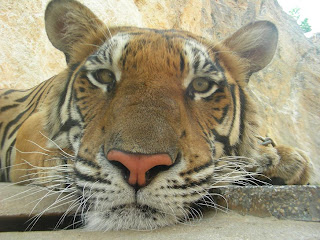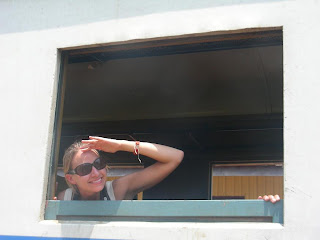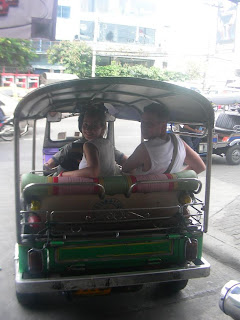Brent
arrived right on cue. We met him, and a couple new friends he'd made,
at the end of chaotic Khao San Rd. We spent a couple days flying around
Bangkok in tuk-tuks, mainly on shopping sprees, then booked a trip up
to Kanchanaburi, where Ian and I had been wanting to go for a while.
The bus picked us up for Kanchanaburi in the early morning and after
circling the city and passing our guest house another two times, we
finally made it out of Bangkok about an hour later.
Our first
stop was the war memorial and grave site, honoring all the men who died
while working on the Bridge over the River Kwai, during their time as
prisoners of war in Thailand. It was shocking that so many of the men
were only in their early twenties.
Next, we visited the
actually Bridge over the River Kwai. Construction of the Thailand-Burma
Railway began on September 16, 1942 at two existing railroad terminals,
one in Thanbyuzayat in Burma and the other in Nong Pladuk, Thailand,
about 25 miles west of Bangkok, in the Ratchburi province. As early as
1939, the Japanese had drawn up plans to build the railway, which was
to provide a supply line capable of transporting 3,000 tons of supplies
per day to support their frontline troops in Burma. At that time,
Japanese engineers estimated that the 257-mile line would take five
years to build because of the harsh conditions and treacherous terrain.
Much of the railway, particularly the roughly 175 miles of track that
ran through Thailand, required high bridges (more than 600 along the
entire line) and deep mountain cuttings. The railway was completed in
just 16 months when the two separate lines joined 23 miles south of the
Three Pagoda's Pass. But the cost was incredibly high.
Though
records are sketchy, approximately 61,000 Allied prisoners of war are
believed to have labored on the railway, including 30,000 British,
18,000 Dutch, 13,000 Australian, and 700 American soldiers. An
estimated 16,000 of those troops died, many of them from diseases like
cholera, beri beri, malaria, and typhoid, most during an intensified
period of construction known as "speedo" that commenced in January
1943. Another 200,000 Asian laborers, mostly Thai, were forced to work
on the railway. More than 80,000 lost their lives.
The railway
operated for just 21 months before it was crippled by Allied weapons,
including the revolutionary radio-controlled AZON bomb. Most of the
railway was dismantled soon after the war's end with the rest lost to
the Thai and Burmese jungles.
We spent the day visiting the
memorial, museums, the bridge, and riding the Death Railway. We boarded
the old train and spent the two hour journey picturing what it would
have been like to build this railway over the steep passes we were
chugging over. Unimaginable really. As I looked out the window I see a
guy running beside the train, who looked like Ian. Wait a minute! It
WAS Ian! I look the other way and see Brent hanging out one of the
train doors. He's dropped his flip-flop off the train, and without
hesitation, Ian jumped off, grabbed it, and jumped back on again!
Everyone was just staring at him like he was crazy. Ian, as usual was
loving it.
The next day we walked the trail through Hell Fire
Pass, where so many of the prisoners died. After such an intense
morning, our day picked up as we spent the afternoon elephant riding.
With our guides, we plodded along until all of a sudden, Brent's guide
jumped off the elephant and left it all up to Brent. Ian and I turned
around to watch Brent's runaway elephant take off in the opposite
direction, with Brent on top with a huge grin on his face, and not a
care in the world. Just call him Mowgli. Next, we went to the tiger
park, run by monks, where we were actually allowed to pet the tigers!
You don't realize how HUGE they are until your right up close. Nothing
has ever happened to a tourist at the park before, but that didn't stop
me from picturing my face in the next days paper, as the first casualty.
Kanchanaburi was amazing. So much history and so beautiful. I highly recommend seeing the movie: Bridge over the River Kwai
